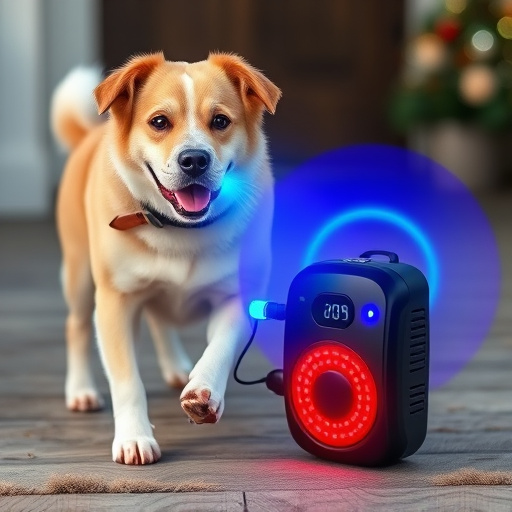Sonic deterrent tools, using inaudible high-frequency sounds to dogs, offer a humane and effective method for training various canine behaviors like barking or aggression. When combined with positive reinforcement, these devices within the sonic deterrent range for dogs provide a versatile tool for responsible pet ownership. Their success hinges on balanced use and consistent practice to strengthen the owner-pet bond through positive interactions.
“Introducing the revolutionary world of electronic pet behavior correction tools, specifically tailored for dog training. This article explores the sonic deterrent range for dogs, a humane and effective approach to canine discipline. We’ll delve into how sound impacts canine behavior, offering insights on ‘Understanding Sonic Deterrent Tools for Dog Training’ and their role in fostering safe, consistent learning environments. Get ready to discover the benefits and proper use of these innovative devices.”
- Understanding Sonic Deterrent Tools for Dog Training
- How Does Sound Impact Canine Behavior?
- Effective Training: Safety and Consistency in Focus
Understanding Sonic Deterrent Tools for Dog Training
Sonic deterrent tools have emerged as a popular and effective method for dog training, particularly in addressing unwanted behaviors like barking, jumping, or running away. These devices use high-frequency sound waves to create an unpleasant sensation in dogs without causing any physical harm. The sonic deterrent range for dogs is typically designed to be inaudible to humans, ensuring it’s a tool that operates discreetly.
When a dog exhibits the targeted behavior, the device emits a specific frequency that disrupts their focus, momentarily distracting them from the unwanted action. Over time, positive reinforcement training alongside the sonic tool helps dogs associate these sounds with correction, encouraging them to desist from the behavior. This method is often preferred for its non-violent approach and ability to train dogs in various environments, making it a versatile option for dog owners.
How Does Sound Impact Canine Behavior?
Sound plays a powerful role in shaping canine behavior, and it’s this principle that underpins the effectiveness of electronic pet behavior correction tools. Within a specific sonic deterrent range for dogs, high-frequency sounds can be used to capture a dog’s attention and communicate an unwanted behavior. These sounds are often imperceptible to human ears but can startle or disorient dogs, prompting them to stop engaging in activities like excessive barking, jumping, or aggression.
The impact of sound on canine behavior is multifaceted. Sudden, sharp noises can trigger a fight-or-flight response, causing the dog to freeze or run away from the source. Conversely, consistent and rhythmic sounds can be used for training purposes, reinforcing desired behaviors through positive reinforcement. By leveraging this understanding of canine audiology, electronic correction tools offer a non-physical method to guide pet behavior, making them valuable for responsible pet ownership.
Effective Training: Safety and Consistency in Focus
Training a pet, especially a dog, requires a delicate balance of safety and consistency. When considering an electronic behavior correction tool like a sonic deterrent range for dogs, it’s crucial to understand its application as a positive reinforcement for desired behaviors rather than punishment. These devices emit ultrasonic sounds that are inaudible to humans but can capture a dog’s attention, encouraging them to modify their actions.
The key to effective training lies in using the tool responsibly and consistently. Safety is paramount; these devices should only be activated when the pet displays problematic behavior, ensuring no unintended harm or fear is inflicted upon them. Regular practice with clear commands and immediate feedback helps establish a consistent training routine. This approach not only teaches pets what behaviors are acceptable but also strengthens the bond between owner and pet through positive interactions.
Electronic pet behavior correction tools, particularly those utilizing sonic deterrents within a specific range for dogs, offer a modern approach to canine training. By leveraging sound’s impact on canine behavior, these devices promote effective training while emphasizing safety and consistency. Understanding how sound influences dog behavior allows owners to navigate this technology with confidence, contributing to the overall well-being and obedience of their furry companions.
